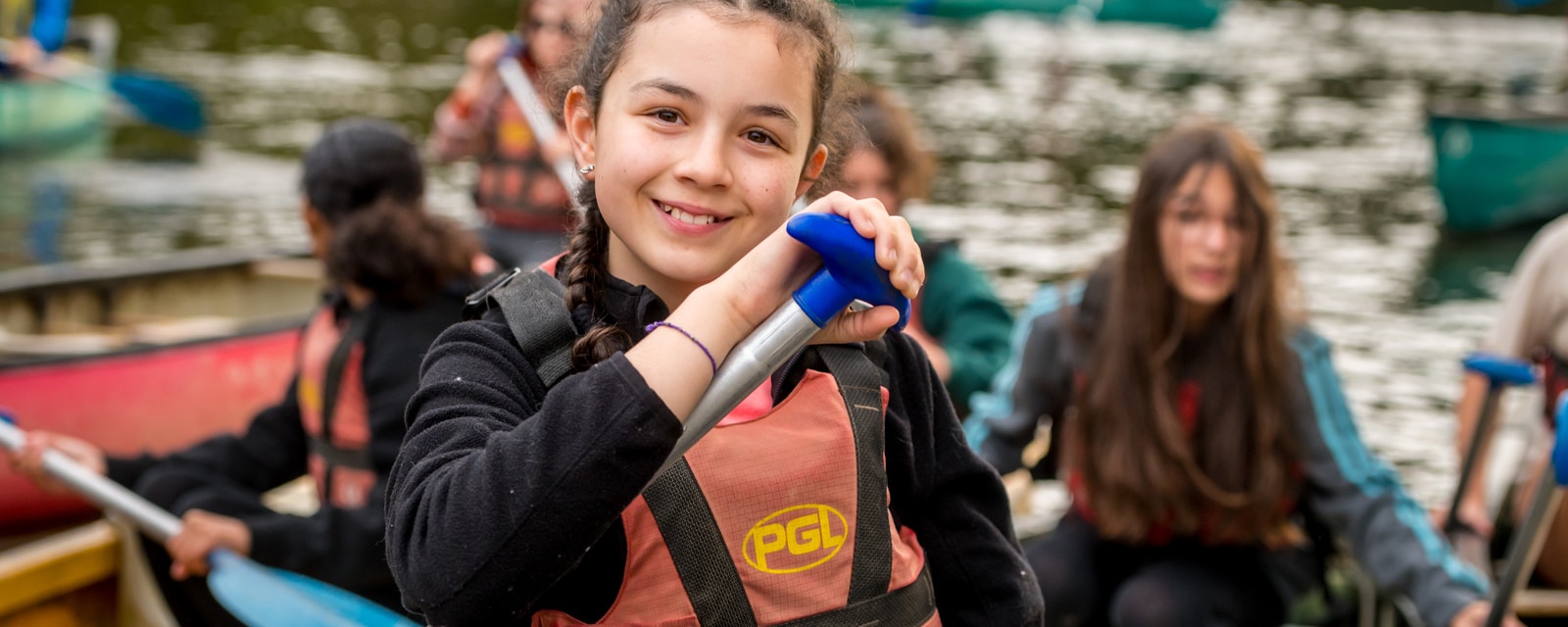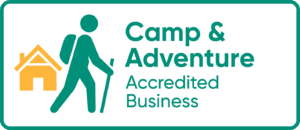Few events in the school calendar spark excitement quite like venturing off into the great outdoors on a school camping trip! From scaling a climbing tower to building your very own raft, school camps let students grow in confidence, curiosity and independence.
While a well-planned itinerary sets the tone, an easy-to-follow school camp packing list is just as important. It helps parents feel prepared, gives students a clear guide on what to bring, and saves teachers valuable time and stress during gear checks and departures.
In this blog, we’ll walk you through exactly what to pack for school camp, including key factors to consider before you go, must-have essentials, and why an outdoor adventure is one of the most valuable experiences you can offer your students.
Factors to consider when packing for a school camp
No two camps are the same, which is why it’s worth planning ahead and thinking carefully about what to pack. The right gear can make all the difference to a smooth, comfortable experience.
Packing smart is key, as bringing too much can weigh students down, while forgetting the essentials might lead to unnecessary stress. Some items may be provided by the camp or organising group, so it’s always a good idea to check with teachers or leaders before loading up the bags.
Below are some key factors to consider when packing for a school camp:
- Season and local climate: Check the forecast for your exact destination and pack layers accordingly. Being clear about what to pack in winter versus summer avoids over-stuffed bags.
- Activity program: School camps may include abseiling, mud runs, or canoeing. Make sure clothing and gear match the scheduled activity. For example, a quick-dry shirt is great for water-based activities.
- Venue facilities: While some venues provide extras like linen, pillows, and towels, most only offer a mattress. It’s worth confirming what’s included with your party leader.
- Duration: This will influence how much you need to pack. A two-night trip will need fewer changes of clothes than a week-long adventure. Plan one outfit per day, and one per evening, plus a few spares just in case.
- Weight and space: Students often need to carry their own bags, so it’s important to keep things light and manageable. Rolling clothes, using compression bags, and sharing communal items (like sunscreen) can help save space.
- School policies: Many schools ban aerosols and nut products. Double-check your risk-assessment paperwork before approving student packing lists.
- Student medical needs: Asthma puffers, EpiPens and personal medications must be packed in originals and handed to staff as per policy. Remind families early to allow pharmacy time.
- Sustainability goals – Swap single-use plastics for refillable bottles and shampoo bars.
What to pack for school camp
Packing can feel overwhelming, but a school camp checklist keeps things simple. These ten essentials will ensure students stay comfortable, safe and ready to dive into adventure.
1. Towels
Quick-dry microfibre towels are light, easy to squash into daypacks and, unlike terry cloth, dry between back-to-back activities or after showers. Pack two per student: one for showers, one for watersports. Write surnames along the seam in a permanent marker to make it easier for students to identify.
2. Toiletries
A toiletry kit helps keep your personal hygiene on track throughout the camp, ensuring students stay clean, comfortable, and confident, no matter how muddy or wet things become! Pack all items in a zip-up toiletry bag or waterproof pouch to prevent leaks in luggage. We recommend including the following essentials:
- Toothbrush & toothpaste: For keeping teeth clean and fresh after mealtimes and long campfire nights.
- Sanitary products: Even if not expected, it’s always wise to be prepared. Pack enough for the duration of the trip, plus a few extras just in case.
- Bodywash or soap: A gentle, travel-sized wash is ideal for daily showers after a big day outdoors.
- Shampoo: Especially useful after swimming or outdoor activities to keep hair clean and tangle-free.
- Sunscreen (SPF 30 or higher): Crucial for outdoor protection, especially in summer. Choose a broad-spectrum sunscreen and reapply throughout the day.
- Hairbrush or comb: Helps keep hair neat and comfortable under hats and helmets.
Tip: Roll-on deodorant and lip balm with SPF are handy extras to include, and using refillable, travel-sized bottles keeps bags lighter and more organised.
3. Clothing for activities
For school camps, we suggest your class bring clothing that they don’t mind getting dirty and wet. We want everyone to get stuck in and not worry about what they’re wearing! This way, they can participate in our exciting and adventurous activities and then change into their clean evening clothes afterwards. Here’s what we think they’ll need:
-
- Pants/Leggings (at least 3 pairs, depending on the length of your camp): We recommend avoiding jeans, as they can become heavy and uncomfortable when wet and take ages to dry.
- Shorts (at least 2 pairs in summer): In warmer weather, breathable shorts are a must. Aim for at least two pairs that are knee-length or longer—this makes them suitable for activities that require a harness, like climbing.
- Fleece/Sweatshirts: A warm fleece or jumper is essential, even in milder climates. Mornings and evenings can get chilly, especially around the campfire or during early starts.
- Long-sleeved and short-sleeved t-shirts: Pack a mix of both to suit changing weather and activity levels. Long sleeves offer extra sun protection during the day and added warmth at night. Short sleeves are great for hot days or layering. Tank tops are not appropriate, as shoulders do need to be covered both for sun protection and for any activities requiring harnesses.
- Hat: In summer, a wide-brimmed or bucket hat offers great sun protection during outdoor activities. In winter, a snug beanie or fleece hat helps retain body heat and keeps campers warm on brisk mornings or night walks.
4. Evening and nighttime clothes
After the day’s activities are complete, it’s important that students have a fresh change of clothes to relax in during the evening and get a good night’s sleep. We suggest adding these items to their overnight school camp packing list:
- Pyjamas: A cosy pair of PJs helps students settle in for the night and stay comfortable while sleeping. During winter, flannelette or thermal options are a great choice for staying warm throughout the night.
- Hoodie: Perfect for chilly evenings and sitting outside. A hoodie adds an extra layer of warmth and is easy to throw on over other clothes when the temperature drops.
- Jeans/Pants/Leggings: A clean pair of long pants or leggings is ideal for dinner time, low-key indoor activities, or just keeping warm once the day winds down. Choose something soft and comfy rather than stiff or restrictive.
- Fleece/Sweatshirt: Fleece jumpers or sweatshirts are lightweight but warm, making them ideal for layering at night. They’re also quick to dry if they get damp, unlike heavier knitwear.
- T-shirts/Tops: Pack at least one spare top for the evening, especially if the daytime one gets muddy or wet. It’s nice to have something clean and comfortable to change into at the end of a big day.
Tip: Pack evening wear items separately from their daywear to make getting ready for the evening quick and easy. A mesh or cloth bag for night-time clothes helps keep things organised and reduces the chance of late-night rummaging in the dark!
5. Comfortable shoes/runners
Happy feet equals happy campers! Bring at least one pair of well-broken-in runners or lightweight hiking shoes with decent tread for bush tracks, plus a second pair of closed-toe water shoes (old runners work) for canoeing and raft-building. Explain that shoes must be completely dry before being packed into coach holds to prevent mildew. Include two pairs of moisture-wicking socks per day for multi-day activities and one spare pair to keep clean for the evenings when everyone is indoors!
6. Waterproofs
As we’ve said, the weather can be extremely unpredictable. You can never be too safe. So, even if the forecast says the sun is shining endlessly, we suggest bringing some kind of waterproof jacket, even if it’s only a thin one. Pair with lightweight waterproof pants if the itinerary includes extended bushwalks, canyoning or other outdoor activities.
7. Wet bag / plastic bags for wet clothes
Nothing derails a school camping trip faster than a pile of sodden swimmers dripping onto tomorrow’s clean clothes. Supply each student with at least two waterproof bags: one for wet garments and another for dirty laundry. A roll-top dry bag is ideal, but simple supermarket bags sealed tightly also work. This will help keep wet clothes contained and away from the dry, clean clothes in students’ luggage.
8. Sleeping bag & pillow (if not included)
Confirm bedding requirements with the venue as early as possible. Some schools will pre-arrange for bedding to be provided, such as sheets, pillows, or even doonas or sleeping bags, which makes things much easier. But if that’s not the case, each student will need to bring their own.
A warm, good-quality sleeping bag is essential, especially if you’re heading off during the cooler months. Cold nights can make it hard to sleep, which affects students’ energy levels the next day, so packing a properly insulated sleeping bag can make all the difference.
Don’t forget a small, comfortable pillow too. It might seem like a minor detail, but a familiar pillow from home can help students sleep more soundly in a new environment. Some campers also like to pack a sleeping bag liner for extra warmth and hygiene. You will also need to pack a fitted sheet.
9. Torch
A torch is a must-have item to add to your school camp packing list. It’s especially handy for those late-night trips to the toilet when students are navigating unfamiliar surroundings in the dark. A small, reliable torch helps them move around safely without tripping, fumbling, or needing to switch on the main lights and wake everyone else in the room.
It also comes in handy during night-time activities, evening campfire gatherings, or when searching for something in a dark cabin. Be sure to pack spare batteries or a charging cable so they’re never caught out when it’s needed most.
10. Refillable water bottle
Your students will be participating in activities all day, making hydration key to ensuring they replenish their fluids after a day of exercise and fun! A tough one-litre BPA-free bottle with a wide mouth is easiest to refill at water points and clean afterwards. Bright colours and bold name labels minimise mix-ups.
Why book a school camp for your students?
Beyond the checklists and permission slips, adventure camp remains one of the most powerful experiences a student can have. Here’s why:
- Real-world learning: Gain a wider world perspective by stepping outside the classroom and experiencing lessons in a hands-on, outdoor environment.
- Resilience and independence: Navigating unfamiliar surroundings teaches problem-solving and self-reliance faster than any classroom worksheet.
- Stronger relationships: Taking part in team challenges helps students build bonds with their peers and teachers, forming friendships that will last a lifetime.
- Physical health: Whether it’s running, climbing, or jumping, camps are a great way to boost fitness, improve coordination, and encourage a lifelong love of being active.
- Well-being and confidence: For many students, stepping outside their comfort zone and mastering a new skill helps build a stronger sense of self.
PGL aims to educate and inspire every pupil who attends one of our camp programs. Refer to our R.E.A.C.H Framework for specific student outcomes and benefits.
Adventure school trips with PGL!
We hope this blog has told you all about what to pack for school camp! If you haven’t booked a school camp for your class yet then why not check out our school camps which include primary school camps and secondary school camps, located at Campaspe Downs (VIC), Camp Rumbug (VIC) and Kindilan (QLD) in Victoria and Queensland.
Your group are at the heart of what we do at PGL. We put safety first with 100% instructor-led activity sessions, which also allows you to bond with your students rather than running the sessions yourself, as you usually would in the classroom. Your PGL Groupies are also always available for any questions you or your students may have, just ask!
Why not contact us today and we’ll be on hand to help arrange a fantastic school camp for you and your group!

A qualified teacher and former university lecturer, Steve has been our Guest Experience Manager at Campaspe Downs for many years. Steve’s work at Victoria University, setting up the “Iramoo Sustainability Centre”, focused on restoring and protecting the native grasslands of western Victoria, as well as advising schools how to set up indigenous gardens. He has lectured on science, indigenous education and outdoor education.








